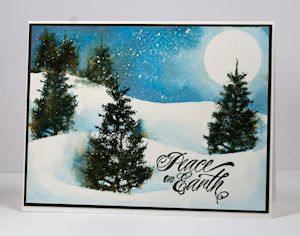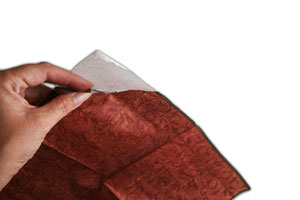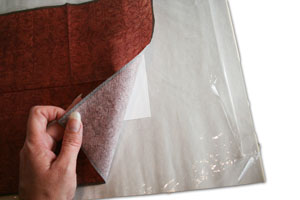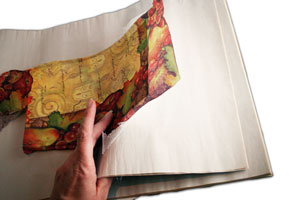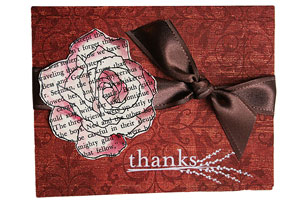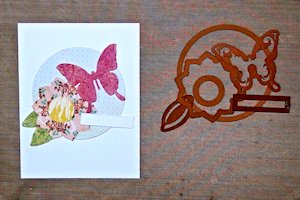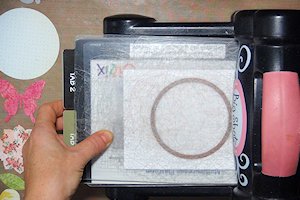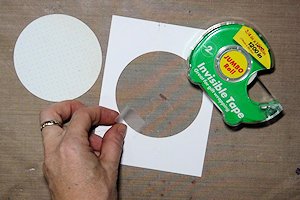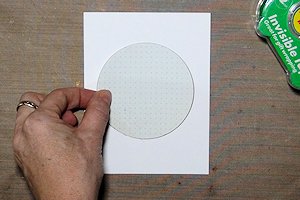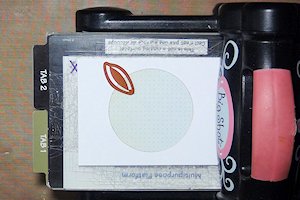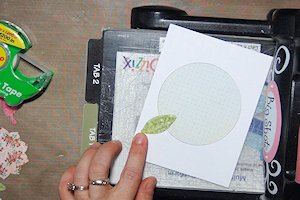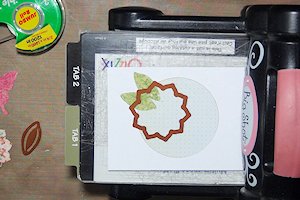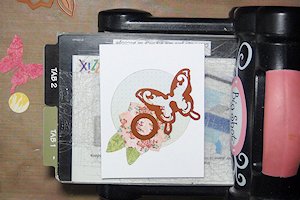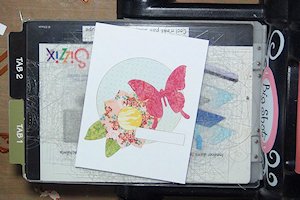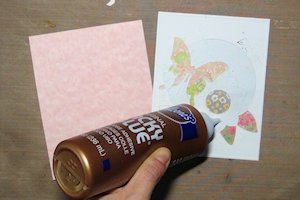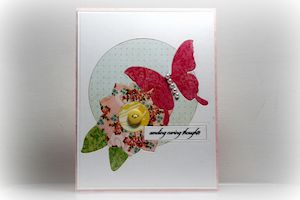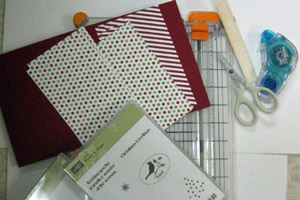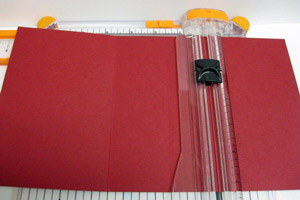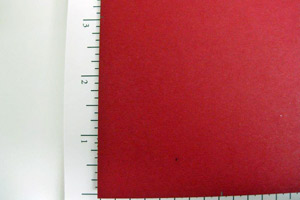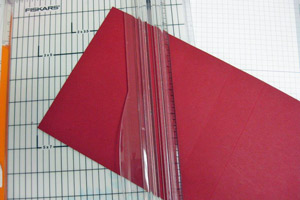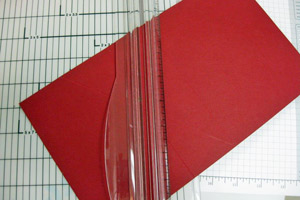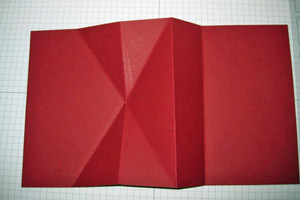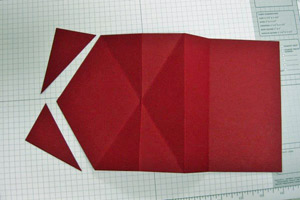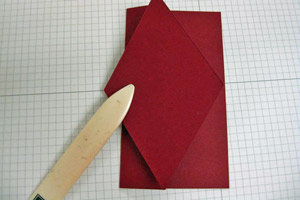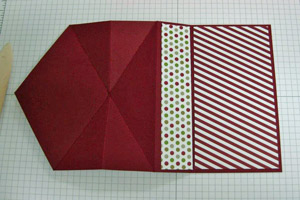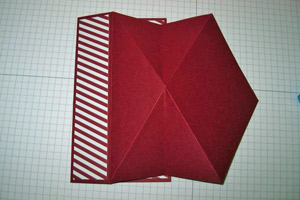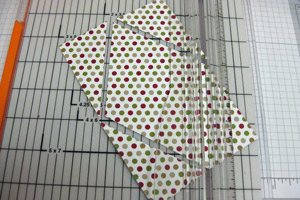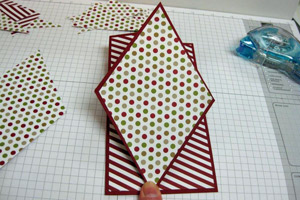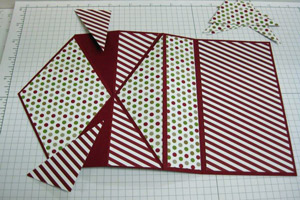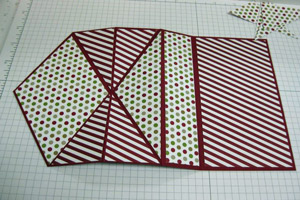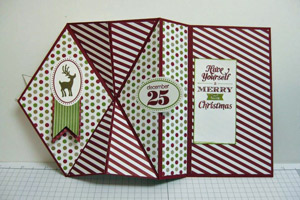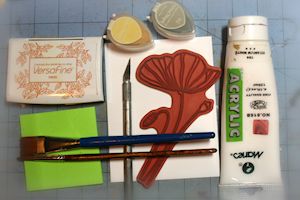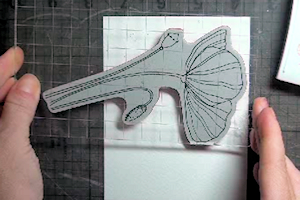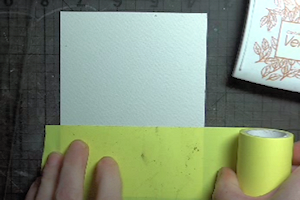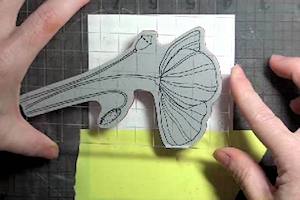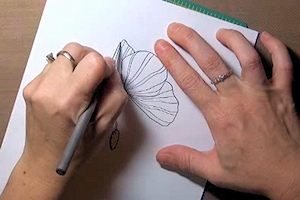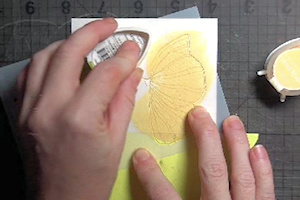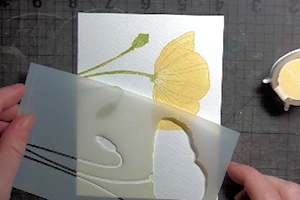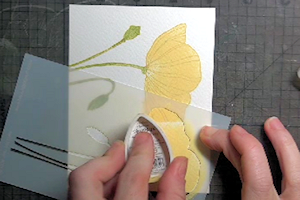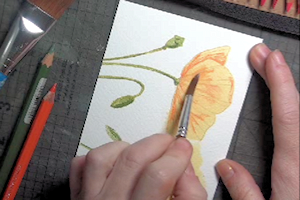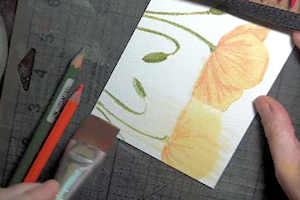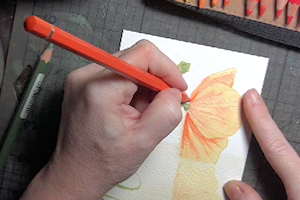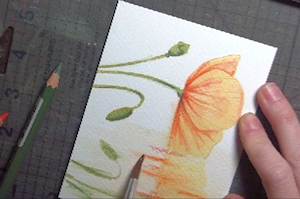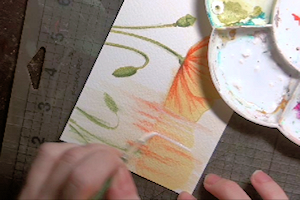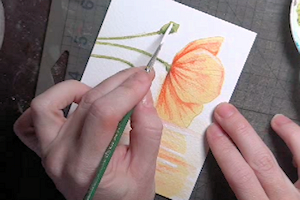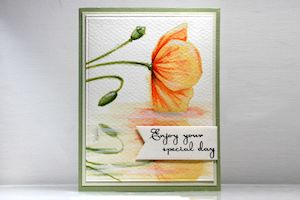Falling Snow Scene
From Spilt Coast Stampersby Heather Telford
Use inks, masks and masking fluid to create a snowy scene.
Supplies

- Dye inks (Memento Northern Pine, Nautical Blue and Bahama Blue used here) or other watercoloring medium
- Paint brush
- Watercolor paper (Fabriano hot press watercolour block used here)
- Splatter brush or old toothbrush
- Masking fluid
- Mister bottle filled with water
- Painter's tape
- Tree stamps in varying sizes (Penny Black “Prancers” transparent stamp set used here)
- Other supplies as needed to complete the project (Penny Black “Hello Winter” transparent stamp set)
Step-by-Step
-
Step 1
Splatter masking fluid over watercolor paper with a splatter brush or tooth brush. Leave to dry.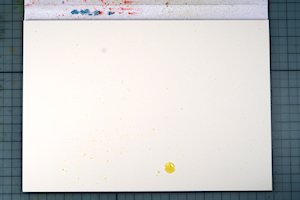
-
Step 2
Use painter's tape to keep the panel in place and mask edges for stamping. Cut a hill-shaped mask and punch a circle mask from Post-it notes. Position masks on watercolor paper to expose the top third of the panel. This will be the sky area.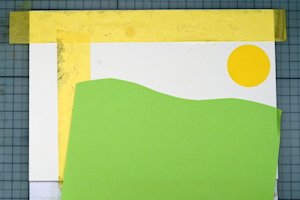
-
Step 3
Ink small tree stamp with dark green ink. Spritz stamp lightly with water and stamp twice over horizon. Ink stamp again, stamp, then spritz paper so color will bleed.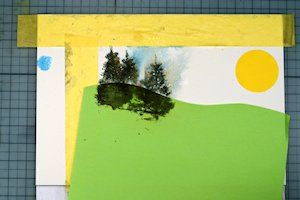
-
Step 4
Press blue inks onto an acrylic block to use as a palette. Add water with a paint brush and paint sky area. Add darker blue in areas away from the moon.
-
Step 5
Remove masks and throw away.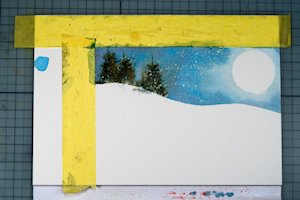
-
Step 6
Cut a new hill mask and position it halfway down the remaining white area. Ink medium sized tree and stamp twice. Spritz paper with water and remove mask.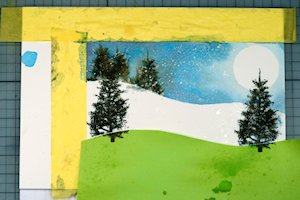
-
Step 7
Using diluted blue ink, paint a snow bank from one side of panel to the other. Stay in line with the base of the two medium sized trees. Rinse brush and use water to dilute and pull color from snow bank line upwards. Dab with cloth or paper towel to soften and dry the edge of pale blue ink.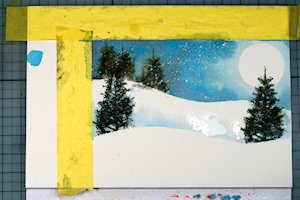
-
Step 8
Cut another Post-it note mask. Position it below previous snow bank and stamp large tree. Spritz with water to let ink bleed. Remove mask.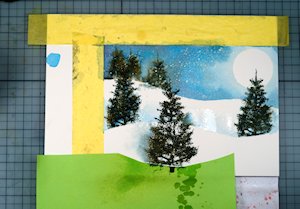
-
Step 9
To frame the scene, paint around lower borders of panel and dab with cloth to soften the edge. When the panel is completely dry, gently rub off the masking fluid to reveal the falling snow.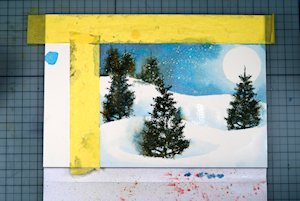
-
Step 10
Trim the panel and choose a color to mat it, then add a sentiment to complete the card.